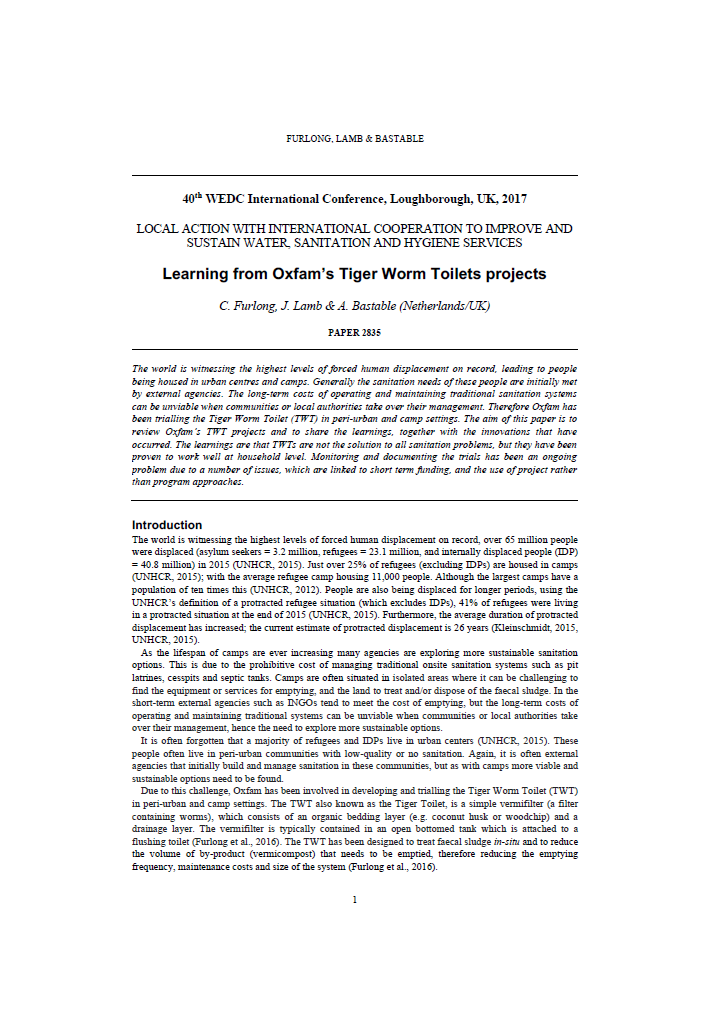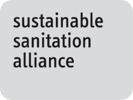Learning from Oxfam’s Tiger Worm Toilets projects Furlong C., Lamb, J., Bastable, A. (2017)
The world is witnessing the highest levels of forced human displacement on record, leading to people being housed in urban centres and camps. Generally the sanitation needs of these people are initially met by external agencies. The long-term costs of operating and maintaining traditional sanitation systems can be unviable when communities or local authorities take over their management. Therefore Oxfam has been trialling the Tiger Worm Toilet (TWT) in peri-urban and camp settings. The aim of this paper is to review Oxfam’s TWT projects and to share the learnings, together with the innovations that have occurred. The learnings are that TWTs are not the solution to all sanitation problems, but they have been proven to work well at household level. Monitoring and documenting the trials has been an ongoing problem due to a number of issues, which are linked to short term funding, and the use of project rather than program approaches.
Bibliographic information
Furlong C., Lamb, J., Bastable, A. (2017). Learning from Oxfam’s Tiger Worm Toilets projects 40th WEDC International Conference, Loughborough, UK
Filter / Tags
Vermifilters, vermifilter toiletsPeri-urbanEnglish

